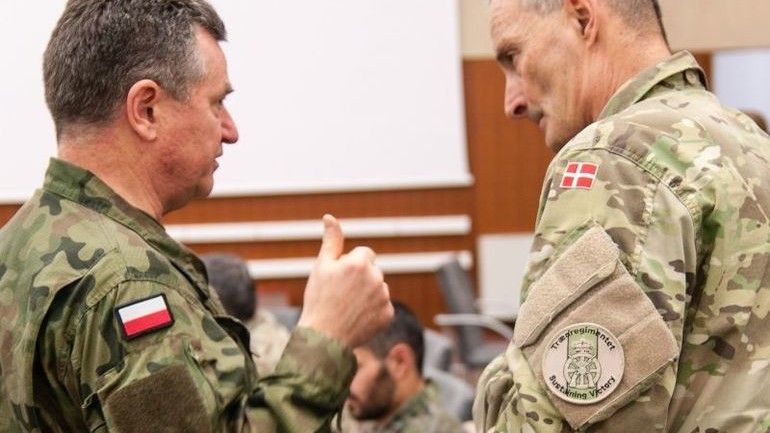Armed Forces
Stettin Multinational Corps North-East Trains The Procedures Related to Reception of the Spearhead During The Eagle Jump Exercise.

Five day long Eagle Jump 2016 exercise took place at the headquarters of the Multinational Corps North-East. The purpose of the operation was to verify the procedural arrangements related to preparation of the unit for the operations and actions related to deployment of the Very High Readiness Joint Task Force units (so called “Spearhead”) in the Central-Eastern European Region. Moreover, NATO Force Integration Units units were also involved in the event.
In the light of the fact that rapid deployment of the NATO forces is required, in order to achieve readiness in the threatened region, it is particularly important to get prepared for relocation of the units involved. The Reception, Staging and Onward Movement (RSOM) procedures are among the most important elements which have a crucial value for the operational effectiveness of the “Spearhead”. Not only are operations of this type problematic within the scope of logistics, but they also require certain engineering and intelligence work to be executed, along with very detailed planning and synchronization at multiple levels.
According to the commanding officer leading the exercise, Lt. Col. Henrik Fischer, RSOM procedures are related to every aspect of accommodating the VJTF component, including preparations pertaining the ports, airports, equipment supplies, assignment of drivers to the vehicles or provision of proper fuel quantity. The process is very complicated, and significant attention to detail needs to be paid by the responsible staff.
Eagle Jump 2016 exercise was prepared with Poland and Baltic Republics in mind. The applied deployment procedures are largely dependent on the area of operations in which the “Spearhead” is going to be active. The operation involved numerous external entities, including the NATO Force Integration Units – bases which are prepared to accommodate the NATO forces, located in Poland, Estonia, Latvia and Lithuania. Similar facilities are expected to be established soon in Slovakia and Hungary as well. The scenario assumed that the VJTF unit would be deployed to Poland and the Baltic States.
Stettin exercise was the first one in the NATO history, during which RSOM procedures were being perfected with involvement on the part of the NATO Force Integration Units. In the light of the reason above, Eagle Jump 2016 exercise was watched closely by the NATO HQ, SHAPE HQ and the command centres located in Brunssum (in the Netherlands) and in Naples (in Italy). Officers delegated from the Spanish, Italian and German-Dutch corps were also present at the Multinational Corps North East HQ. They have been watching the course of the exercise.
Particular emphasis, during the Eagle Jump 2016 exercise, was placed on coordination of the allied operations and training related to the fact that numerous NATO member states would be involved in a similar initiative. These procedures are identical to those that are going to be used, should a crisis arise. Eagle Jump 2016 exercise was also one of the stages related to the preparations undertaken by the Stettin Corps, in order to reach full operational readiness, which is expected to happen in 2017.
It is worth to remember that the “Jump” word in the name of the exercise refers to the newly established rapid reaction elements. Last year, Noble Jump exercise took place in Poland. Its scenario included deployment and field training for the VJTF element. Brilliant Jump series of training events is planned this year. The purpose of these operations is to assess the Corps’ capabilities within the scope of the tasks that have been defined during the NATO summit in Wales, including the responsibility for commanding the Very high readiness Joint Task Force (so called “Spearhead”) and the NATO Response Force, and elements of those units, should they be stationed in the North-Eastern flank of the alliance. Deployment of the VJTF component will probably also be included within the scope of the trained procedures.
VJTF (Very High Readiness Joint Task Force) element, commonly referred to as the NATO “Spearhead”, has been created in the light of the arrangements made during the NATO summit in Wales, back in 2014. These arrangements are a part of the readiness action plan, adopted during the summit. The above forces include a land forces brigade supported by air, naval and special forces components. The forces may be rapidly deployed in the threatened region of any of the NATO member states. The deployment readiness is said to be reachable within the period of maximally five to seven days.
